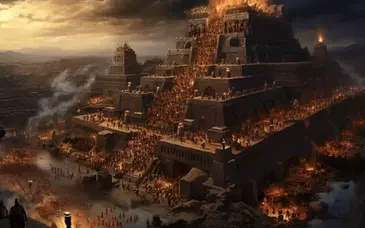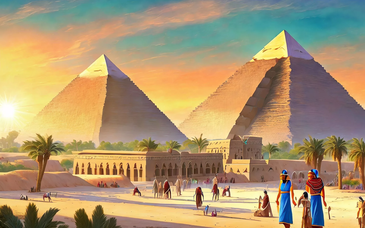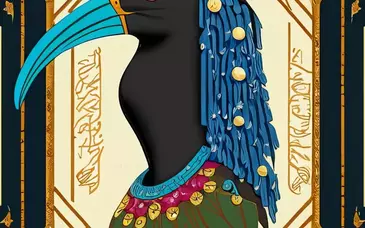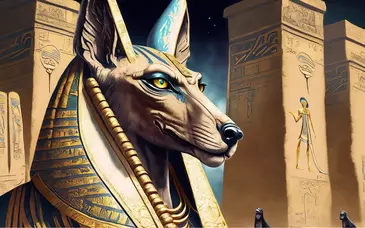Coins of Ancient Egypt
You Might Also Like:

Read More
Welcome to our World History section, a vast treasure trove of historical knowledge that takes you on a captivating journey through the annals of human civilization. Our collection spans a wide spectrum of topics, providing an exhaustive resource for history enthusiasts, students, and curious minds
...
Read More
Ancient Egypt, Part Two
EGYPT'S HISTORYRobert Guisepi, 2004
The Valley of the Nile
New Kingdom
The 13th Dynasty saw weak rulers—50 or 60 in 150 years. The Second Intermediate Period (14th-17th dynasties) was another time of divided rule in Egypt. The Hyksos, invaders from western Asia, entered Egypt...
Read More
Ancient Egypt: Ahmose
By Robert Guisepi, 1984
Egypt’s History
The Valley of the Nile
Ahmose (reigned c. 1539–14 BC) was the founder of Egypt’s 18th dynasty. He completed his brother’s mission to expel the Hyksos—Asiatic rulers who had dominated Egypt—and expanded Egypt’s influence by invading Palest...
Read More
Ancient Egypt: Amenhotep IIEGYPT'S HISTORYBy Robert Guisepi, 1984
The Valley of the Nile
Amenhotep II (reigned c. 1426–1400 BC) was a 15th-century BC king of Egypt and the son of Thutmose III. He ruled during the height of Egypt's imperial era and worked to maintain his father's conquests through mi...
Read More
Ancient Egypt: Amenhotep III
EGYPT'S HISTORYRobert Guisepi, 1984The Valley of the Nile
Amenhotep III (ruled 1390-1353 BC), the son of Thutmose IV, ascended to the throne at approximately 12 years of age. Early in his reign, he married Tiy, who became his queen. Unlike earlier royal tutors, Tiy's fat...
Read More
Ancient Egypt (epigraphy)
Egypt attracted the special curiosity of the Greeks, and Herodotus (5th century BC) devoted an entire book to on-the-spot observations and fanciful tales about the land of the Nile. The lost Aigyptiaka (or Aegyptiaca) of Manetho (3rd century BC) contained the roster of 30 d...
Read More
Ancient Egypt: Apopis
Egypt's HistoryRobert Guisepi, 1984
The Valley of the Nile
Apopis was the last great Hyksos king of Egypt (reigned c. 1585-1542 BC). Initially, he controlled most of Egypt but was gradually driven back northward to the vicinity of his capital in the Nile River delta due to succ...
Read More
Ancient Egypt, Religions Of Egypt
Author: Foot Moore, GeorgeChapter II
The Middle Kingdom And The Empire
The Rise of Thebes - The Sun as Supreme God - Local Gods -
Identifications - Enneads and Triads - The Dead - Judgment before Osiris -
Moral Ideas - The Empire - Amon-Re the National God - Power o
...
Read More
Conquest by Hyksos and Egyptian Expansion to Ramses II
Eventually, like previous dynasties, the Twelfth Dynasty fell. And the Thirteenth Dynasty, at Memphis, waned across its 150 years of rule and fell with what by now was an old phenomenon: invasion by a foreign army, around the year 1650 BCE.
The ...
Read More

Read More
Welcome to the ideal place to start exploring the wonders of the Ancient Egypt. Find out all about this amazing culture, and learn about the gods they worshiped, the Pharaohs that ruled and the tombs and statues they left behind.
find out about Tutankhamun, Akhenaten and the other celebrities of t...
Read More
Ancient Egypt had its origin in the course of the Nile River. It reached three periods of great pharaonic splendor: the Ancient Kingdom, the Middle Kingdom and the New Kingdom.
Ancient Egypt map domain stretched from the delta of the Nile in the north, to Elephantine Island, where is the first catar...
Read More
Mummy and Coffin of Meresamun
Cartonnage, pigment, human remainsThird Intermediate Period, Dynasty 22, ca. 946-712 B.C.Purchased in Luxor, 1920OIM 10797
This colorful cartonnage mummy case, which still contains the mummy of an ancient Egyptian woman, is inscribed with the name Meresamun ("She lives ...
Read More
The Early Dynastic Period -0 : 1 : 2 :
The Old Kingdom -3 : 4 : 5 : 6 :
The First Intermediate Period -7+8 : 9+10 :
The Middle Kingdom -11 : 12 :
The Second Intermediate Period -13 : 14 : 15 : 16 : 17 :
The New Kingdom -18 : 19 : 20 :
The Third Intermediate Period -High Priests (Thebes) : 21 : 22 : ...
Read More
Interesting facts and information about the mummification process.
The mummy shown here dates from the Roman Period. It has a distinctive painting inlaid into the head part, and is intricately bandaged and studded. The feet are molded in gold painted plaster, which is typical of the period.
...
Read More

Read More
The god Thoth was worshiped in the form of an Ibis, and is often shown in human form with the unusual head of that bird.
Thoth was primarily thought to be the god of wisdom. He was patron of arts and science and also the patron god of scribes. He was the inventor of the words of god, or Hieroglyphs...
Read More
Osiris is perhaps the most famous of the gods of Ancient Egypt. Here he is shown in his typical guise as a mummified pharaoh holding the hook and flail, the traditional symbols of royal authority. Osiris is usually depicted wearing the feathered Atef crown.
Osiris is a common feature in Egyptian fu...
Read More

Read More
The Ancient Egyptians held a great reverence for the Jackal headed god Anubis, who oversaw the embalming and mummification process as well as escorting the deceased through the procedures for entering the underworld.When the person arrived for judgment, they would first declare their purity before...
Read More